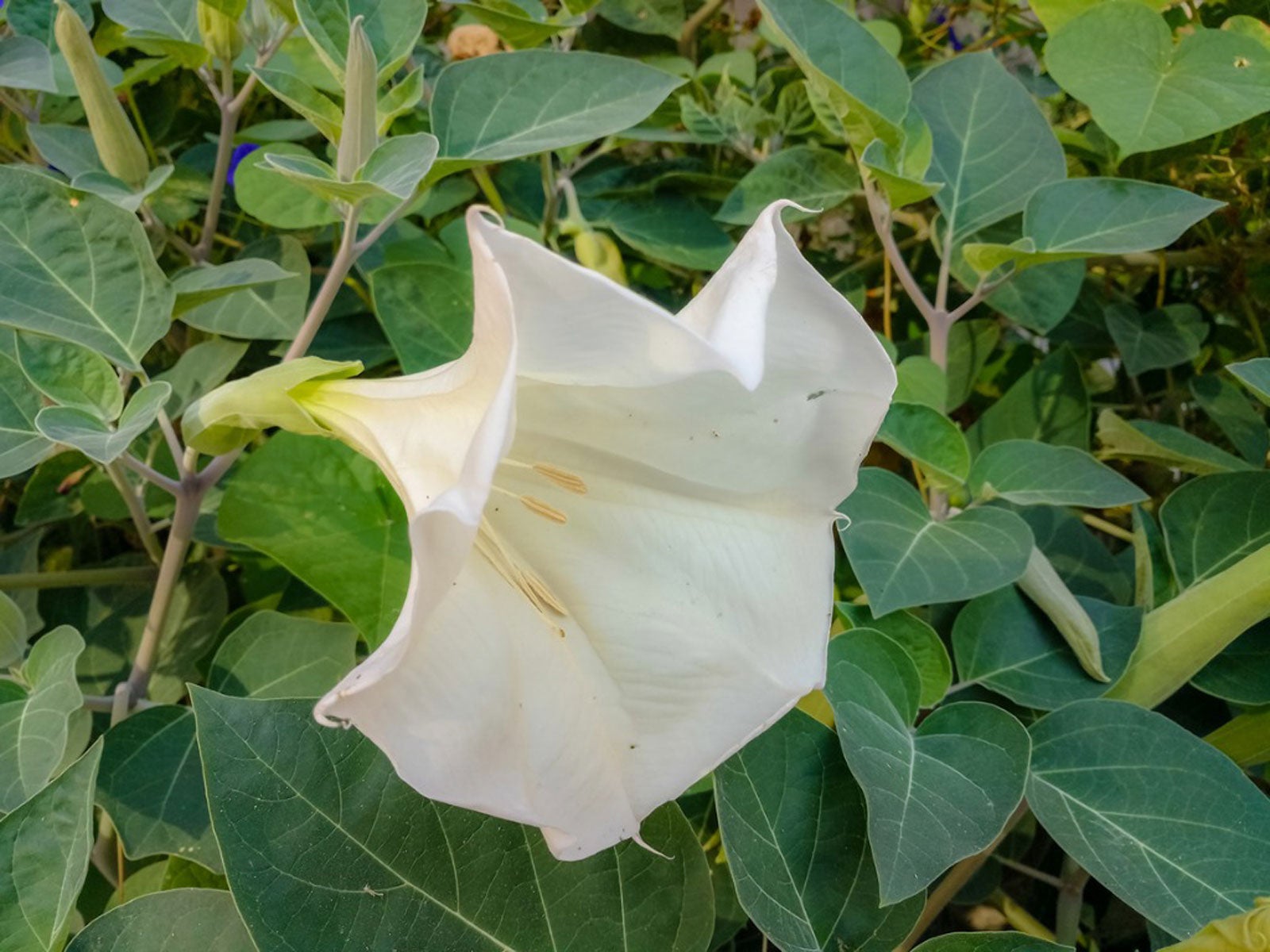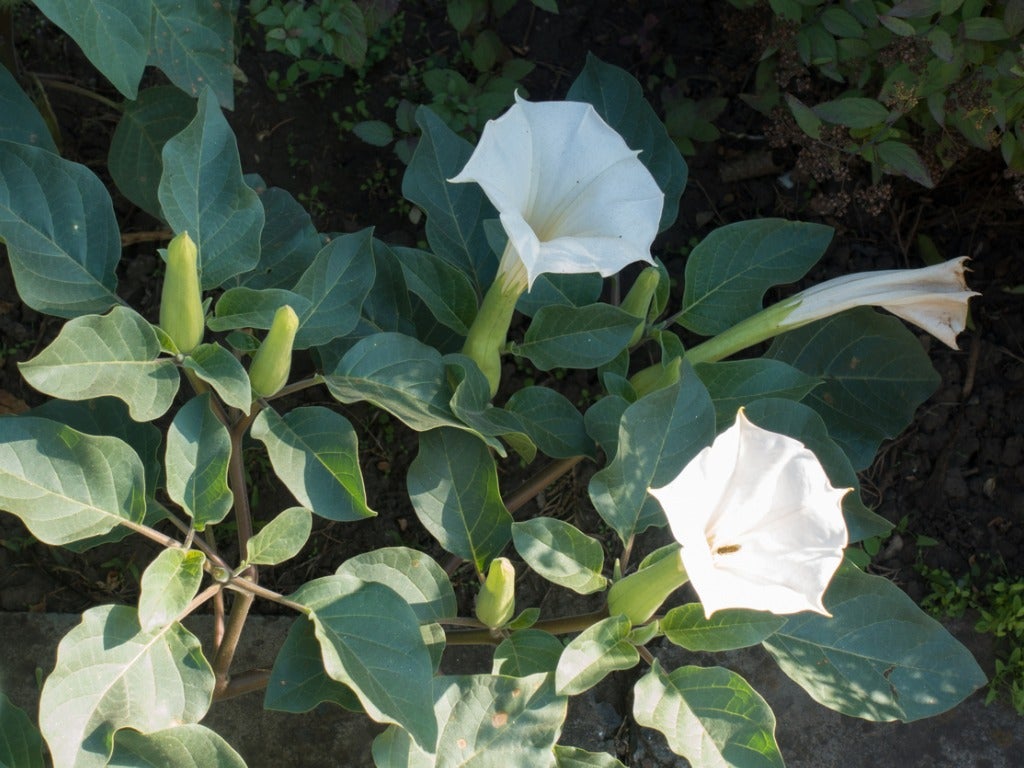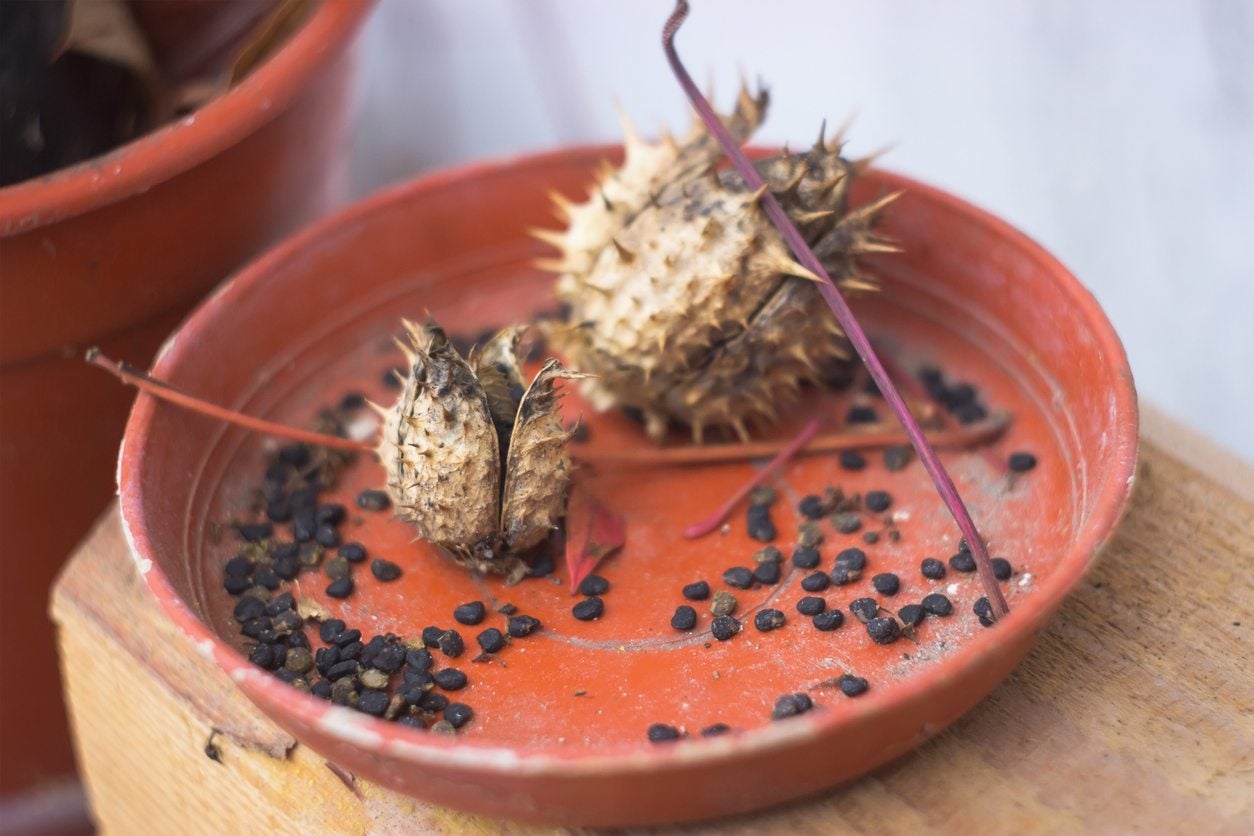About Datura Plants - Learn How To Grow Datura Trumpet Flower


If you don't already know it, you will fall in love with this spectacular South American plant. Datura, or trumpet flower, is one of those “ooh and ahh” plants with its bold flowers and rapid growth. What is Datura? It is an herbaceous perennial or annual with a deadly reputation as an ingredient in poisons and love potions. Read on to learn more.
What is Datura?
Datura plants are often confused with Brugmansia. Brugmansia or Datura, which is which? Brugmansia can become a massive woody tree but Datura is smaller and less woody with upright as opposed to drooping flowers. Trumpet flower has a bad rap due to a history that links it to such dangerous plants as nightshade and mandrake. Let's set that aside and look at its attributes. Datura plants grow quickly and may get up to 4 feet (1 m.) tall. The blooms are fragrant and particularly so at night. Most flowers are white but they may also be yellow, purple, lavender and red. Stems are soft, but erect, and they have a grayish green tinge. Leaves are lobed and lightly furred. The flowers are the standout at several inches (9 cm.) in width. The plant is generally an annual but self seeds vigorously and seedlings grow at a furious rate to adult plants in one season. This self-seeding behavior ensures Datura plant growing year after year.
How to Grow Datura Trumpet Flower
Datura plants are ridiculously easy to grow from seed. They need full sun and rich fertile earth that drains well. Sow seeds directly outside into a prepared bed in fall in warmer climates and in early spring after all danger of frost has passed in cooler climates. You can grow trumpet flower inside or outside in a pot, or simply spread seed with a light coat of sand outside in a sunny location. The little plants will exceed your expectations with their speedy growth and low maintenance.
Datura Trumpet Flower Care
Datura plants need full sun, fertile soil and regular watering. They get droopy and cranky if they do not get adequate moisture. During winter they can sustain themselves in most climates with whatever moisture naturally occurs. Datura trumpet care specifies that potted plants need special care and annual repotting. The plants may lose leaves in winter if left outside in milder climates, but spring back in warmer temperatures. Datura plants growing in colder zones will require you to move the plant indoors or just let it reseed and start new plants. Fertilize in spring with a light flowering plant food high in nitrogen and then follow with a formula higher in phosphorus to promote flowering. Cut back errant stems, but otherwise you don't need to prune this plant. Staking may be necessary when the plant grows too quickly and has slender stems.
Gardening tips, videos, info and more delivered right to your inbox!
Sign up for the Gardening Know How newsletter today and receive a free copy of our e-book "How to Grow Delicious Tomatoes".

Bonnie Grant is a professional landscaper with a Certification in Urban Gardening. She has been gardening and writing for 15 years. A former professional chef, she has a passion for edible landscaping.
-
 Get Ready For A Summer Of Hummers! Grow These Full Sun Hummingbird Plants and Flowers
Get Ready For A Summer Of Hummers! Grow These Full Sun Hummingbird Plants and FlowersIf you’re lucky enough to enjoy a sunny backyard, make sure you are maxing out on your pollinator opportunities and grow these full sun hummingbird plants and flowers
By Tonya Barnett
-
 12 Lush Alternatives To A Lawn For Sustainable Spaces
12 Lush Alternatives To A Lawn For Sustainable SpacesAlternatives to a lawn are beautiful and also beneficial to your local ecosystem and its pollinators. Explore our top picks for plants to replace grass.
By Tonya Barnett
-
 Moonflower Vs. Datura: Two Different Plants With Common Name Moonflower
Moonflower Vs. Datura: Two Different Plants With Common Name MoonflowerMoonflower vs. datura, this can be pretty confusing since both plants share many similarities and a common name. Learn differences here.
By Mary Ellen Ellis
-
 How To Propagate Datura: Learn About Datura Plant Propagation
How To Propagate Datura: Learn About Datura Plant PropagationMost gardeners who try growing datura plants quickly realize they can use more in their gardens. In this article, we will discuss how to propagate datura plants. Click here for datura plant propagation tips and techniques.
By Darcy Larum